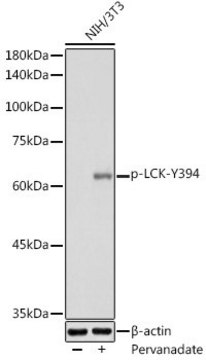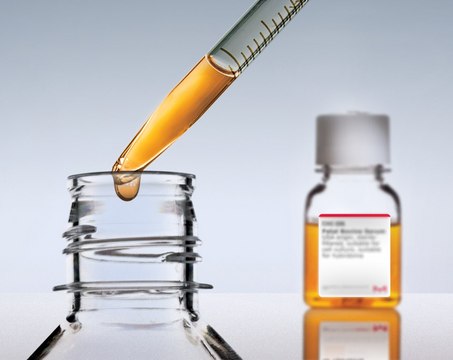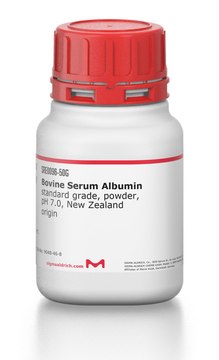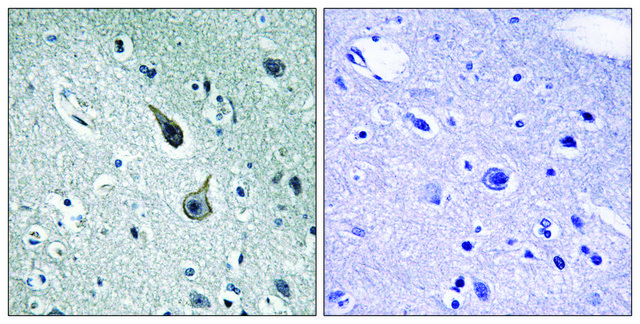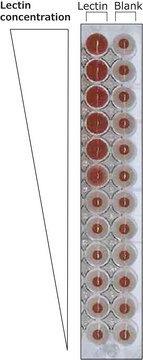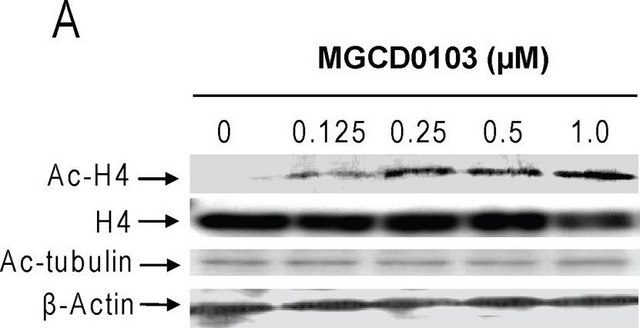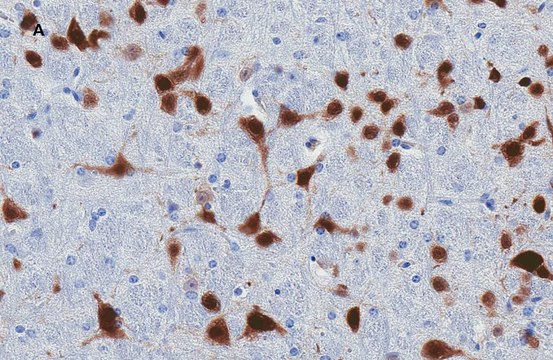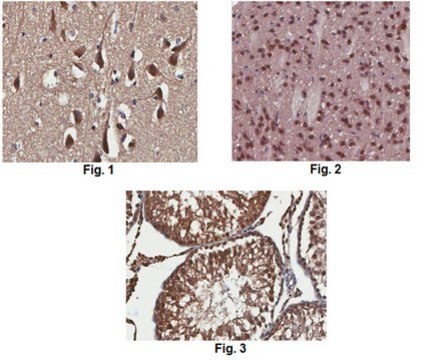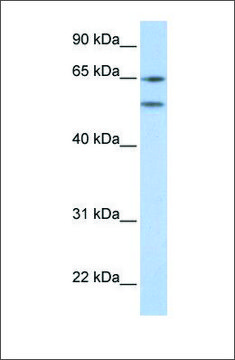SAB4300118
Anti-phospho-LCK (pTyr394) antibody produced in rabbit
affinity isolated antibody
Sign Into View Organizational & Contract Pricing
All Photos(1)
Synonym(s):
Anti-YT16 antibody produced in rabbit, Anti-lymphocyte-specific protein tyrosine kinase antibody produced in rabbit, Anti-p56lck antibody produced in rabbit, Anti-pp58lck antibody produced in rabbit
Recommended Products
biological source
rabbit
Quality Level
conjugate
unconjugated
antibody form
affinity isolated antibody
antibody product type
primary antibodies
clone
polyclonal
form
buffered aqueous solution
mol wt
~56 kDa
species reactivity
mouse, rat, human
concentration
1 mg/mL
technique(s)
western blot: 1:500-1:1000
isotype
IgG
immunogen sequence
(N-E-YP-T-A)
NCBI accession no.
UniProt accession no.
shipped in
wet ice
storage temp.
−20°C
target post-translational modification
phosphorylation (pTyr394)
Gene Information
human ... LCK(3932)
Immunogen
Peptide sequence around phosphorylation site of tyrosine 393 (N-E-Y(p)-T-A), according to the protein LCK.
Features and Benefits
Evaluate our antibodies with complete peace of mind. If the antibody does not perform in your application, we will issue a full credit or replacement antibody. Learn more.
Target description
Tyrosine kinase that plays an essential role for the selection and maturation of developing T-cell in the thymus and in mature T-cell function. Is constitutively associated with the cytoplasmic portions of the CD4 and CD8 surface receptors and plays a key role in T-cell antigen receptor(TCR)-linked signal transduction pathways. Association of the TCR with a peptide antigen-bound MHC complex facilitates the interaction of CD4 and CD8 with MHC class II and class I molecules, respectively, and thereby recruits the associated LCK to the vicinity of the TCR/CD3 complex. LCK then phosphorylates tyrosines residues within the immunoreceptor tyrosines-based activation motifs (ITAMs) in the cytoplasmic tails of the TCRgamma chains and CD3 subunits, initiating the TCR/CD3 signaling pathway. In addition, contributes to signaling by other receptor molecules. Associates directly with the cytoplasmic tail of CD2, and upon engagement of the CD2 molecule, LCK undergoes hyperphosphorylation and activation. Also plays a role in the IL2 receptor-linked signaling pathway that controls T-cell proliferative response. Binding of IL2 to its receptor results in increased activity of LCK. Is expressed at all stages of thymocyte development and is required for the regulation of maturation events that are governed by both pre-TCR and mature alpha beta TCR.
Physical form
Solution in phosphate-buffered saline containing 0.02% sodium azide and 50% glycerol
Disclaimer
Unless otherwise stated in our catalog or other company documentation accompanying the product(s), our products are intended for research use only and are not to be used for any other purpose, which includes but is not limited to, unauthorized commercial uses, in vitro diagnostic uses, ex vivo or in vivo therapeutic uses or any type of consumption or application to humans or animals.
WGK
WGK 1
Flash Point(F)
Not applicable
Flash Point(C)
Not applicable
Regulatory Information
常规特殊物品
Certificates of Analysis (COA)
Search for Certificates of Analysis (COA) by entering the products Lot/Batch Number. Lot and Batch Numbers can be found on a product’s label following the words ‘Lot’ or ‘Batch’.
Already Own This Product?
Find documentation for the products that you have recently purchased in the Document Library.
Le Han et al.
Acta pharmacologica Sinica, 41(6), 800-812 (2020-01-16)
IgD-Fc-Ig fusion protein, a new biological agent, is constructed by linking a segment of human IgD-Fc with a segment of human IgG1-Fc, which specifically blocks the IgD-IgDR pathway and selectively inhibits the abnormal proliferation, activation, and differentiation of T cells.
Rebekah L Browning et al.
Cancer immunology research, 4(8), 698-707 (2016-06-12)
The immunomodulatory drug lenalidomide has demonstrated efficacy in patients with chronic lymphocytic leukemia (CLL), despite a lack of direct cytotoxic effects in vitro The mechanism of lenalidomide efficacy in vivo is thought to occur via a combination of enhanced immune
Aurélie Le Page et al.
Cell communication and signaling : CCS, 12, 2-2 (2014-01-11)
Immune responses are generally impaired in aged mammals. T cells have been extensively studied in this context due to the initial discovery of their reduced proliferative capacity with aging. The decreased responses involve altered signaling events associated with the early
Sicheng Fu et al.
Nature communications, 11(1), 438-438 (2020-01-25)
Dysfunction of invariant natural killer T (iNKT) cells in tumor microenvironment hinders their anti-tumor efficacy, and the underlying mechanisms remain unclear. Here we report that iNKT cells increase lipid biosynthesis after activation, and that is promoted by PPARγ and PLZF
Our team of scientists has experience in all areas of research including Life Science, Material Science, Chemical Synthesis, Chromatography, Analytical and many others.
Contact Technical Service